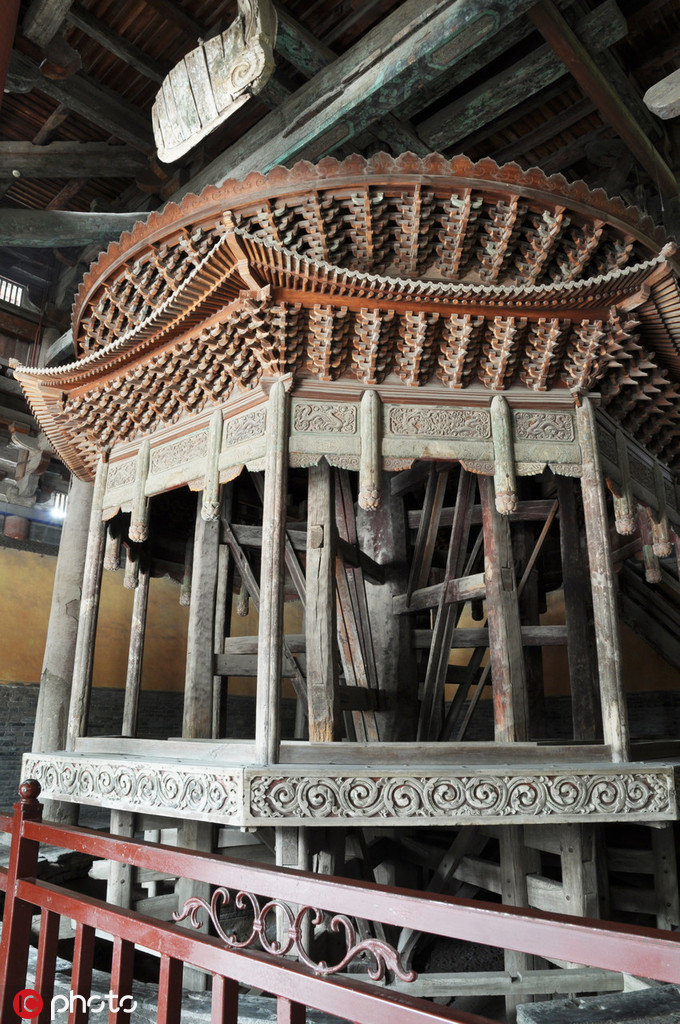Longxing Temple

Longxing Temple has been known by many names ever since it was built in 586 in China's Sui Dynasty (581-618). Located in the east of Zhengding County, Hebei province, the Buddhist monastery is now best known by the locals by a catchy name - the Temple of the Great Buddha (Dafo si), for a huge wooden statue of Avalokitesvara, made in the Song Dynasty (960-1279), stands in the main hall. The current name dates to the Kangxi reign of the Qing Dynasty (1644-1911).
Like other important temples and monasteries in China, Longxing Temple has been renovated often throughout its long history. Notably, the Northern Song emperors were such devoted Buddhist believers that they had more buildings added and Buddhist statues commissioned for worship.
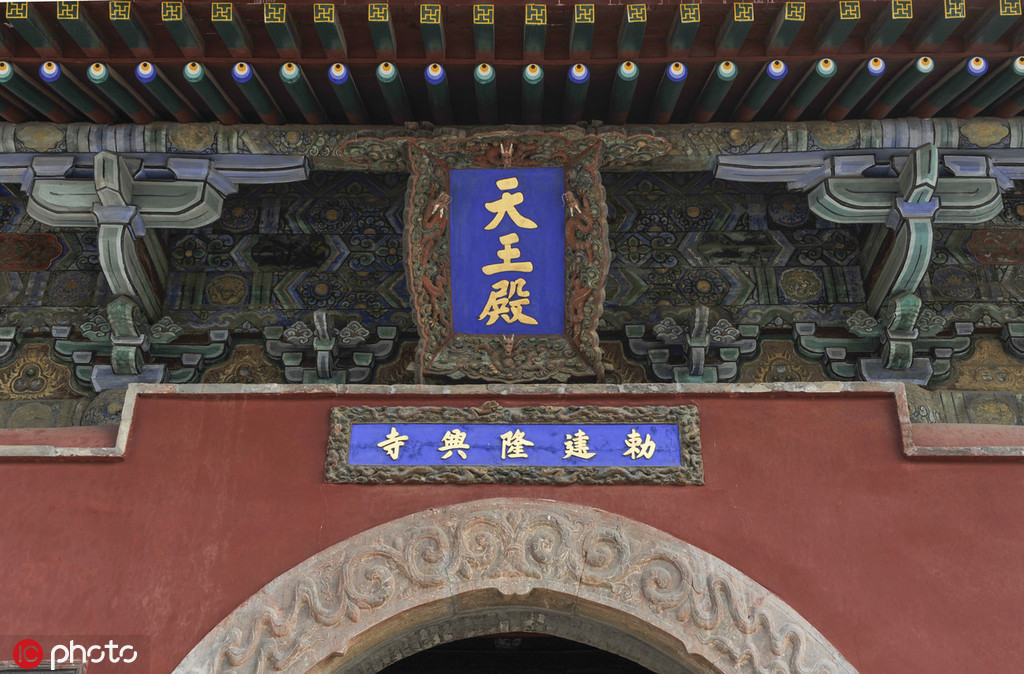
Of the extant architecture in the temple, The Hall of Gems (Moni dian) and the Hall of Revolving Bookcase (Zhuanlunzang dian) have most preserved the Song Dynasty architectural style, which could otherwise be seen in ancient paintings only. They are prized as the Twin Sublimities of the extant historical buildings in Longxing Temple.
Hall of Gems (Moni dian)
Many honorary titles have been conferred to define the hall: the only early 11th-century building with gabled porches preserved in China, the only building that houses historical murals in its temple, and one of the most acclaimed Song Dynasty architectural sites.

The hall is seven bays wide and seven bays deep. It is nearly square in plan, with gabled porches on four sides – a very rare design. The architectural design is considered to have been commonly adopted during the Tang and the Song dynasties (618-1279) but phased out by the Ming and Qing dynasties (1368-1911).
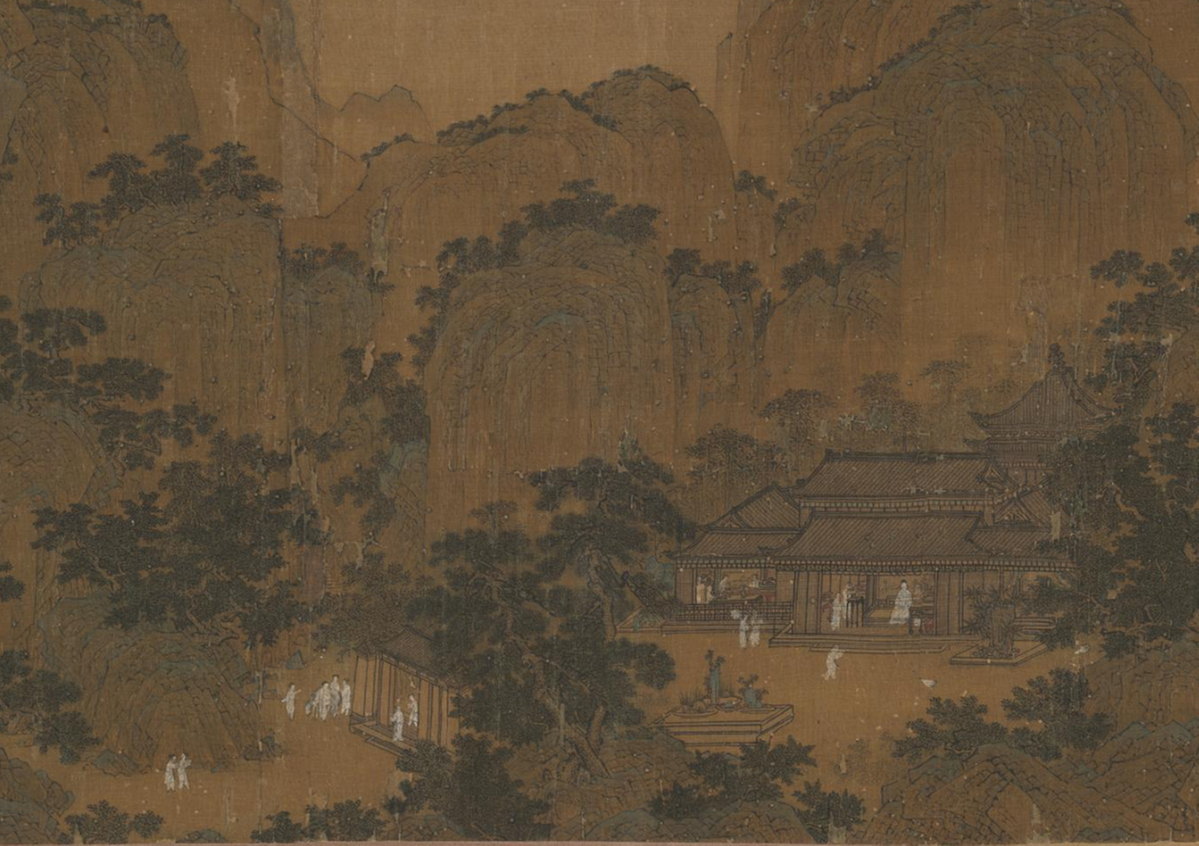
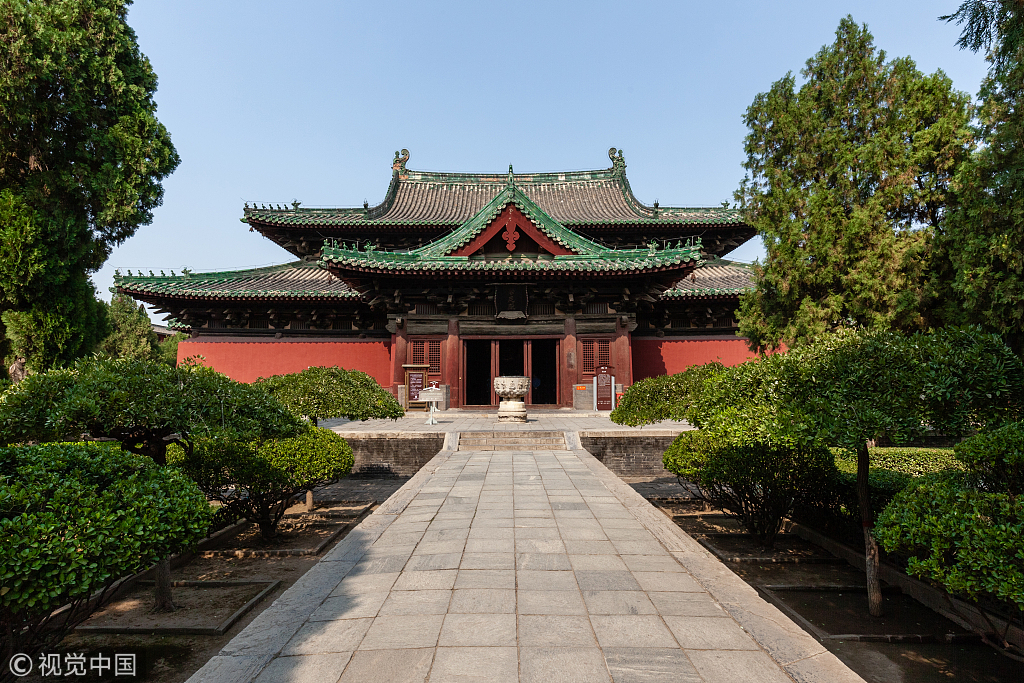
Surviving mural paintings inside the Hall are largely dated to the Ming Dynasty (1368-1644), a continuation of the painting techniques used in the previous Tang and Song dynasties (618-1279). It typifies Han Chinese style Buddhist murals and is among the largest murals in north China's Beijing-Tianjin-Hebei region. A contrasting color scheme of red, green, blue, ochre, and white mineral pigments gives the Buddhist stories depicted a strong visual impact. Buddhist figures in the mural paintings are all portrayed in Han Chinese style.

The north side of the wall at the rear of the Hall features a full-scale polychrome clay sculpture wall, spectacular and overhanging. The most remarkable figure among the thirty-or-so clay deities of Buddhism is the serenely smiling Avalokitesvara who sits among sea waves.
The Hall of Revolving Bookcase (Zhuanlunzang dian)
The Hall is a library of Buddhist sutras. The two-storey building is dated to the Northern Song Dynasty (960-1127). The porch in front, serving as a rain-shelter, is an extension of the ground floor eave.
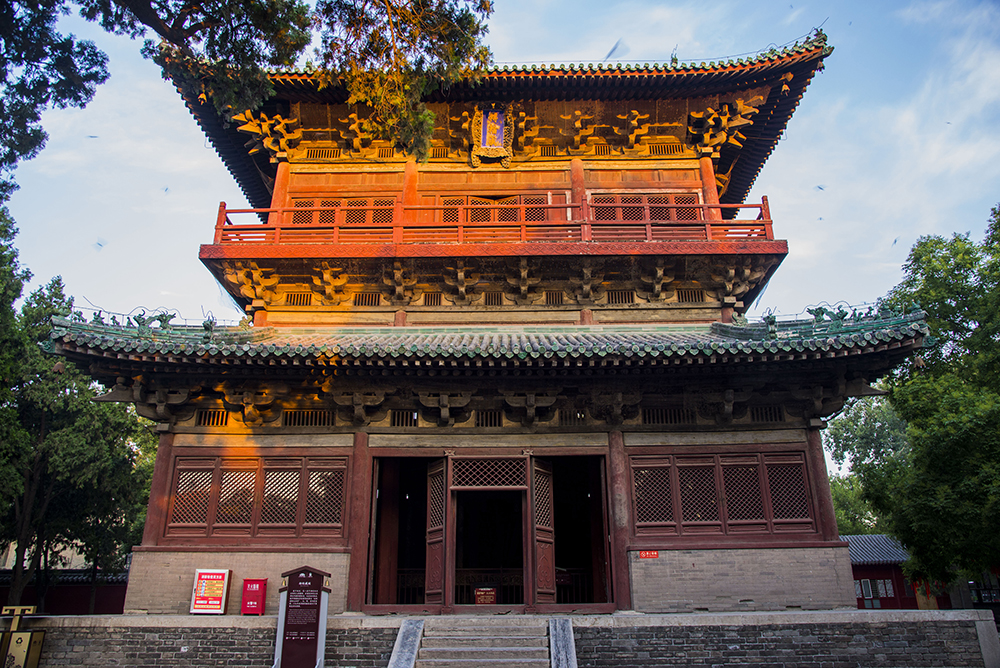
The plan of the Hall is a geometric shape - symmetrical and regular. The design insures the even distribution of load born by the structure and avoids twisting caused by the horizontal pull.
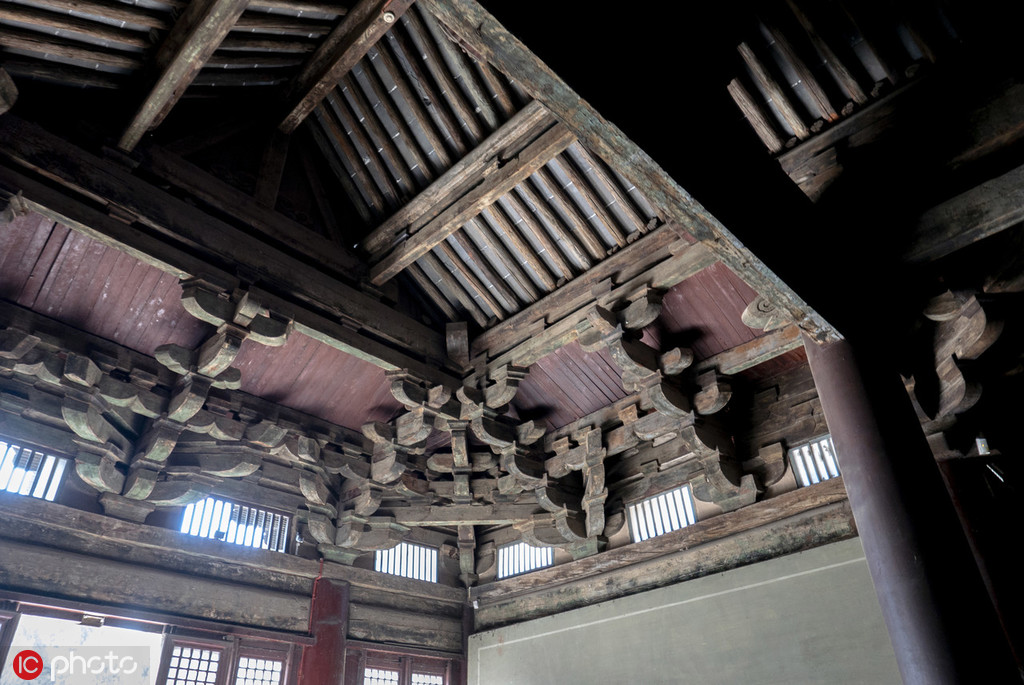
In the very center of the hall stands an imposing octagonal revolving bookshelf with a diameter of seven meters. In the form of a double-eaved pavilion, it can be pivoted by only two people. The cabinetwork strictly follows the specifications in the Song Dynasty construction manual Treatise on Architectural Methods (Yingzao fashi), and is credited by the great Chinese architect Liang Sicheng (1901-1972) as "an invaluable example of Song construction". Two of the six columns around it are placed out of line in order to make room for the massive structure. A railed staircase in the rear leads to the upper floor.
